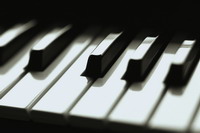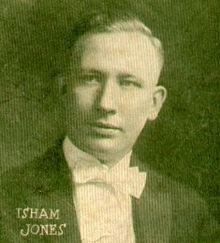Piano Sheets > Isham Jones Sheet Music > There Is No Greater Love (ver. 1) Piano Sheet
There Is No Greater Love (ver. 1) by Isham Jones - Piano Sheets and Free Sheet Music

About the Song
Other avaliable versions of this music sheet: Version 1 Version 2 Version 3
"There Is No Greater Love" is a 1936 jazz standard composed by Isham Jones, with lyrics by Marty Symes. It was the last hit song for Jones's orchestra before the bandleader turned the orchestra over to Woody Herman, beginning the latter's 50 year career as a bandleader.[1]
The song is often played as a ballad – an example of this approach is Dinah Washington's 1954 recording on Dinah Jams. Medium-tempo swing renditions have also been recorded by several artists, including Miles Davis on two occasions.[2] Isham Jones (January 31, 1894 – October 19, 1956) was a United States bandleader, violinist, bassist and songwriter.
Jones was born in Coalton, Ohio, and grew up in Saginaw, Michigan, where he started his first band. In 1915 he moved to Chicago, Illinois, which remained his base through 1924. After that he toured England before reestablishing himself in New York City.
The Isham.
Download this sheet!
About the Artist

Random article
How to locate free sheet music easily If you want to learn how to play piano then having access to free sheet music can be an inexpensive and great way to learn! There are plenty of websites online, which offer you high quality sheet music free. Here are some ways you can locate these sources for your benefit.
The concept of free
If a site provides sheet music, which you can download and print without any infringement of copyright or violations then this is free sheet music. Some websites may have a prerequisite of attaining membership via subscriptions to newsletters or registering with an account. In order to arrive at sites providing no obligation free sheet music, it may take a bit of effort and patience but the results are worth it!
(More...)
